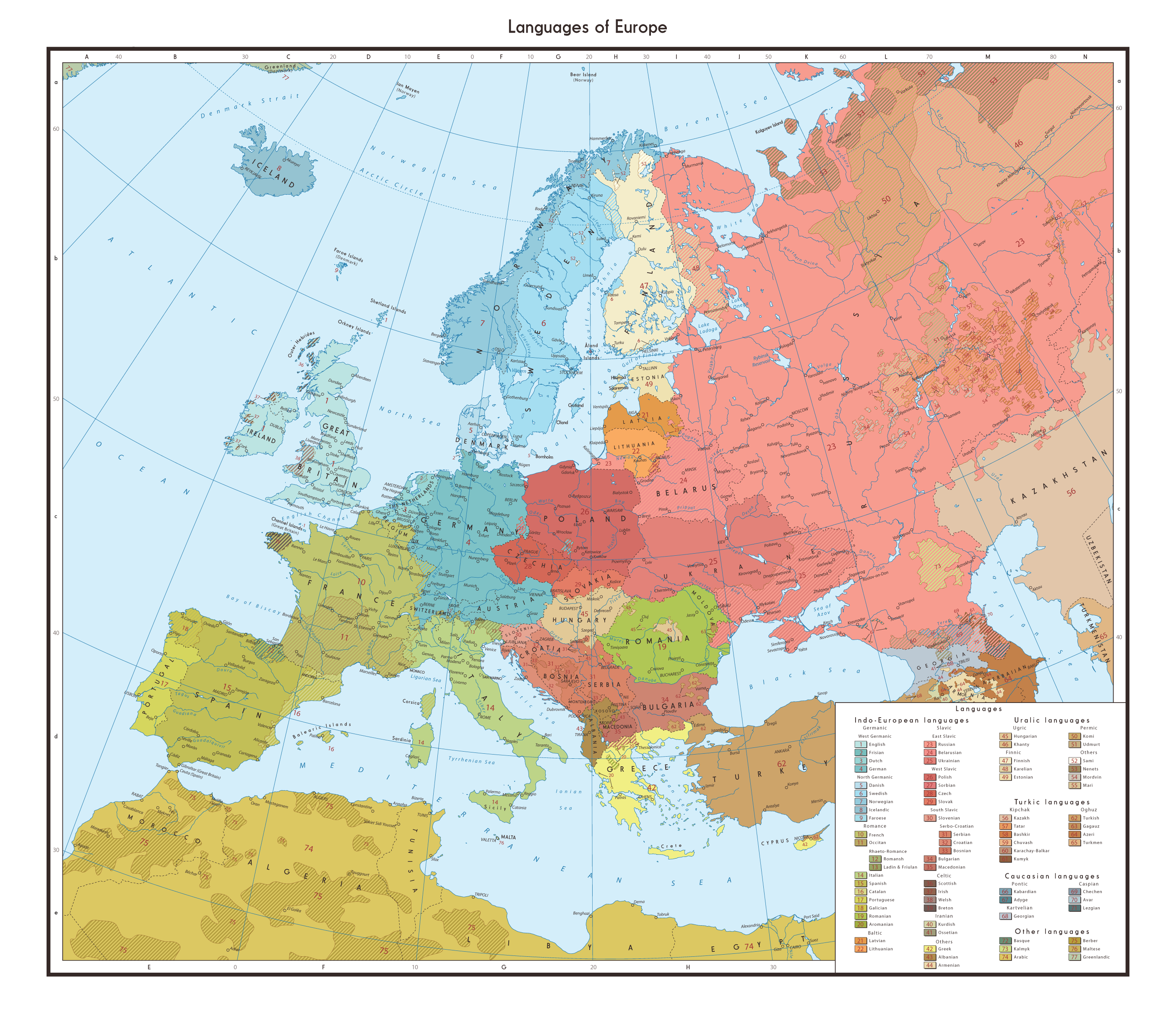HOME | DD
 1Blomma — Linguistic map of Europe
1Blomma — Linguistic map of Europe

Published: 2013-08-28 11:53:30 +0000 UTC; Views: 53807; Favourites: 270; Downloads: 1163
Redirect to original
Description
Linguistic map of Europe as of today. Striped areas indicate several mother tongues in the region. For example, Brussels is a majority-French city, shown striped French and Dutch because of the Dutch minority residing there.
Edit on January 5th (I followed some of your suggestions)
-Added Occitan
-Added German minority in Silesia
-Added Italian (Corsican) on Corsica
-Added English in Malta
-Grouped Ladin and Friulan together
-Changed the colour of Greek to better distinguish it from Arabic
-Increased the size from 2300x2000 to 2800x2400
Related content
Comments: 127

Ok, are they Hungarians or Romanians?
👍: 0 ⏩: 1

That depends how you look at it. They are Romanian citizens, ethnic Hungarians and they speak Hungarian. Here's some information about them www.faqs.org/minorities/Easter…
👍: 0 ⏩: 1

I just found out that the Hungarians were placed in Romania under the Treaty of Trianon which was signed after WW1 I believe?
👍: 0 ⏩: 0

These kinds of maps are always so out of date in regards to the coast of Finland, because everyone just use older maps as sources which use even older maps etc. etc. There needs to be at least Finnish stripes on most of the southern coastline, and at least some on the western coast.
en.wikipedia.org/wiki/List_of_…
This is pretty detailed, at the municipal level.
👍: 0 ⏩: 1

Fixed Finnish and Swedish, thank you for pointing that out.
👍: 0 ⏩: 0

This looks incredibly well made and researched, and yet the comments suggest it's even MORE detailed? Wow. Nice work though
👍: 0 ⏩: 0

Poor Silesians, always forgotten.
👍: 0 ⏩: 1

I'd put the Swedish in Southern Finland striped with Finnish though.
👍: 0 ⏩: 2

Indeed, only like 5% of Finnish people speak Swedish as their main language.
👍: 0 ⏩: 0

The regions around Vilnius that have a large number of Polish speakers should be striped Lithuanian/Polish.
Also, there are pockets of Lithuanian speakers in north-eastern Poland and northern Belarus.
That said, I realize different sources probably give different information (I'm trying to find sources to back my statements above, but failing so far). What were the main sources you used for this?
👍: 0 ⏩: 1

Unfortunately, the only data I can find is in Lithuanian, from the 2011 census. web.stat.gov.lt/lt/pages/view/… here you can download lots of tables, one of them being "Gyventojai pagal tautybę savivaldybėse (XLS)", which is the region-based nationality data. It shows that of all the regions, only Vilnius region (not the city itself) and Šalčininkai region have Polish majorities, and Vilnius region has ~52% Poles with ~32% Lithuanians, so that one should be striped, IMHO.
👍: 0 ⏩: 1

Fixed. Thank you. I used this map as source for the Polish language in Lithuania upload.wikimedia.org/wikipedia…
👍: 0 ⏩: 1

You're welcome. Also, it's a great map, as usual
Regarding the Wikipedia map you used - it may be somewhat outdated, I would think that the percentage of Polish speakers is gradually declining.
👍: 0 ⏩: 1

As was expected, sadly. National minorities in Europe are all pretty much declining
👍: 0 ⏩: 0

Marvellous, European Language actual situation is changed a lot in the last century!
👍: 0 ⏩: 0

Scottish should be Scottish Gaelic.
👍: 0 ⏩: 0

No Occitan?
Also this is a very minor point but some group Galician with the Celtic language group. Some, most don't.
👍: 0 ⏩: 1

Why would anyone group those two? Galician is closely related to Portuguese and Spanish, isn't it?
👍: 0 ⏩: 1

I believe it's supposed to have a closer connection to the Celtiberian languages. As I said most don't pay attention to this theory but some groups are trying to promote Galician culture as Celtic.
👍: 0 ⏩: 1

Galician as a language is more closely related to both Portuguese and Spanish, although it retains some of its own elements, and can be easily understood by speakers of both languages. Learn Galician, Lesson 1 The video is in Spanish, but she's talking about the differences in sounds between Gallego and Spanish. You might be thinking of Basque/ Euskara, but that's properly considered an orphan language.
👍: 0 ⏩: 1

Ah my mistake then, it's a supposed cultural rather than linguistic link.
👍: 0 ⏩: 1

Until late Middle Ages, there was a proto-language called Galician-Portuguese. Until Renaissance, there wasn't a clear division between the two languages. And Celtiberians languages are considered extanct for ages!
👍: 0 ⏩: 0
<= Prev |



























